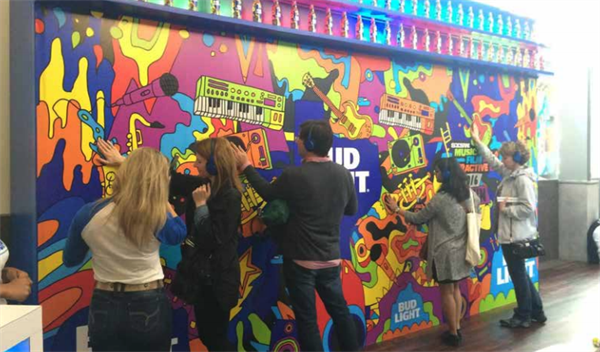Once upon a time, brand marketers could hire a single advertising agency to produce creative visuals and messages for broadcast TV, magazine, radio, newspaper, in-store and outdoor advertising. Today, many traditional advertising and marketing agencies are reinventing themselves to cope with rapid changes in communications channels, consumer preferences, marketing automation technologies and data analytics. It’s important to follow what’s happening with advertising firms, marketing agencies and creative services studios because it can affect how you operate and market your printing business.
Why Ad Agencies Must Evolve
 The advertising business started changing with the advent of websites, e-commerce, online publishing and email. Suddenly brands needed experts who could help them coordinate variable data campaigns that involved email and direct mail and/or online and printed catalogs. Since then, marketing communications have only become more complicated. The widespread adoption of smartphones has empowered brands to communicate with consumers wherever they happen to be. But with smartphone cameras and 24/7 access to social media, every consumer can easily and instantly share their ideas and experiences with audiences around the world. Today, brand perception is shaped less by advertising and more by the positive and negative experiences a customer has at multiple touch points.
The advertising business started changing with the advent of websites, e-commerce, online publishing and email. Suddenly brands needed experts who could help them coordinate variable data campaigns that involved email and direct mail and/or online and printed catalogs. Since then, marketing communications have only become more complicated. The widespread adoption of smartphones has empowered brands to communicate with consumers wherever they happen to be. But with smartphone cameras and 24/7 access to social media, every consumer can easily and instantly share their ideas and experiences with audiences around the world. Today, brand perception is shaped less by advertising and more by the positive and negative experiences a customer has at multiple touch points.
Brands and their agencies must also stay abreast of changes in marketing and consumer trends, such as updates in technology, retail, social media, online messaging, content marketing and more. Brand marketers must also consider generational differences. Some consumer brands must continue to connect with Baby Boomers who grew up with broadcast TV while simultaneously cultivating a loyal audience of digital natives.
Instead of hiring a single advertising agency, some brands now work with multiple agencies. They can hire specialized agencies with expertise in app development, 360-degree videos, engagement marketing, experience design, brand storytelling and content marketing. In addition to competing with specialty agencies, traditional advertising agencies compete with software-driven ad buying programs that enable brands to take more of their marketing in-house. Some brands are turning to business consultancies such as Deloitte and Accenture, which now offer marketing support as part of enterprise-wide business planning. Deloitte acquired the full-service creative studio Heat, and Accenture bought London’s Karmarama creative services agency. Please touch the graphics! This music-mixing graphics installation at the 2016 South by Southwest® Music and Interactive Festival featured Novalia’s PrintedTouch technology, which combines printed conductive ink on paper or plastic with a small control module that attaches to the print to add touch, audio, Bluetooth connectivity and data capture. Bud Light commissioned four such installations, and Novalia designed and produced them in collaboration with the MediaCom Content + Connections agency. (Image courtesy of Novalia.)
Please touch the graphics! This music-mixing graphics installation at the 2016 South by Southwest® Music and Interactive Festival featured Novalia’s PrintedTouch technology, which combines printed conductive ink on paper or plastic with a small control module that attaches to the print to add touch, audio, Bluetooth connectivity and data capture. Bud Light commissioned four such installations, and Novalia designed and produced them in collaboration with the MediaCom Content + Connections agency. (Image courtesy of Novalia.)
Traditional magazine publishing companies such as Forbes and Condé Nast have also diversified beyond print advertising sales to support brands that want help with content marketing (“native advertising”) and experiential marketing. Forbes offers the BrandVoice content-marketing platform and Condé Nast acquired the Pop2Life experiential marketing agency and Ribyt event technology platform.
In the face of these new sources of competition, advertising industry analysts question whether advertising agencies should even call themselves “advertising agencies” anymore. Both words — “advertising” and “agency” are limiting in terms of the services creative agencies should provide. Some agencies may promote themselves as “consultancies” or “partners” to compete with firms such as Accenture Interactive or Deloitte Digital. As Patrick Coffee writes in Ad Week, “Creatives want to offer more consulting services while consultancies want to grow more creative.”
To read more, check out the full article in the January/February 2018 SGIA Journal Graphic Edition and come back on Wednesday to read part two!